
Ten years of the Eastern Partnership: how do young Eastern Partners view their ties with the European Union?
Last December at the Eastern Partnership conference in Vienna, a correspondent from the Segodnya website in Ukraine, Krystyna Zeleniuk spoke to ‘Young European Ambassadors’ from all six Eastern Partnership countries.
These young people are part of a network established by the ‘EU NEIGHBOURS east’ project to bring together young people from the Eastern Partnership and the European Union, raising awareness and understanding of the partnership among their peers.
The six ‘ambassadors’ present at the summit were students from Armenia, Azerbaijan, Belarus, Georgia, the Republic of Moldova and Ukraine. Being young, they have learned about the Eastern Partnership recently, seeing the partnership with fresh eyes, less burdened by the political upheavals that have haunted the Eastern Partnership during its ten years.
Segodnya asked the young ambassadors five identical questions about the Eastern Partnership, the influence of Russia and the possibility for partner countries one day to become members of the European Union:
1. When did you first learn about the Eastern Partnership?
2. What is the main goal of this initiative? Is it EU membership?
3. What are the pros and cons of the Eastern Partnership?
4. Should the initiative be revised, given the fact that Ukraine, Georgia and Moldova have openly declared their desire to join the EU?
5. How do you perceive the influence of Russia?
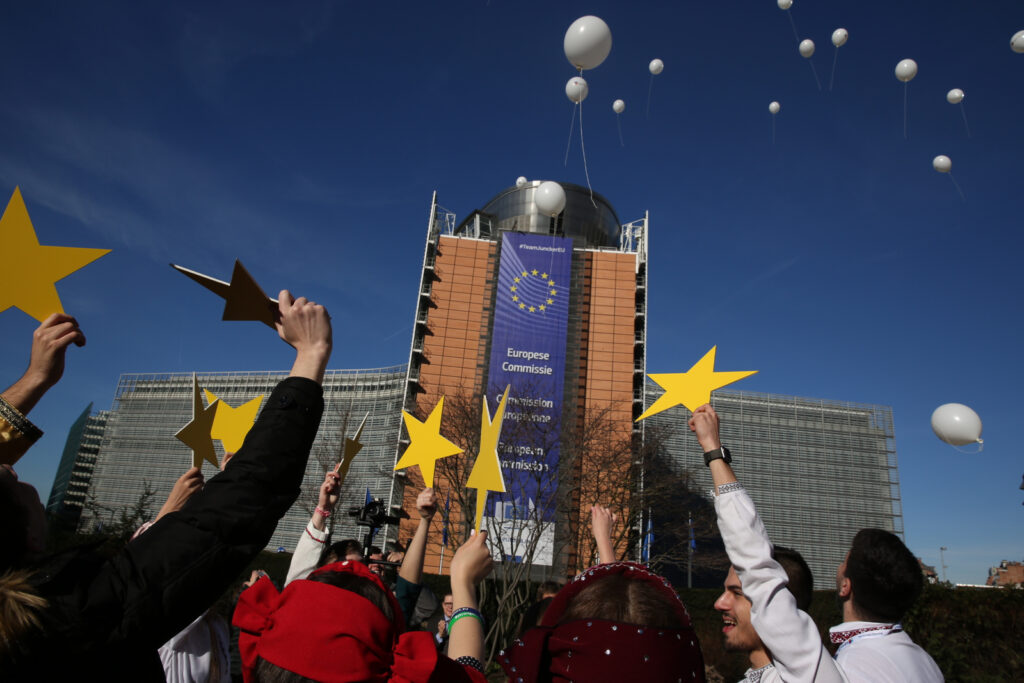 In 2019, Eastern Partnership initiative celebrates 10th anniversary
In 2019, Eastern Partnership initiative celebrates 10th anniversary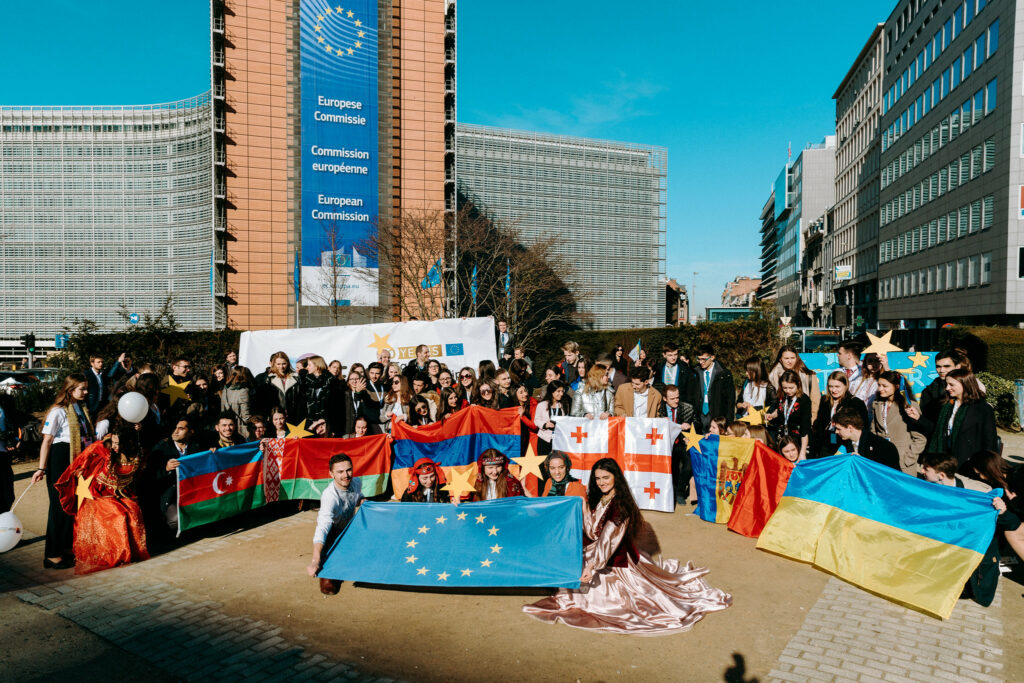 In 2019, Eastern Partnership initiative celebrates 10th anniversary
In 2019, Eastern Partnership initiative celebrates 10th anniversary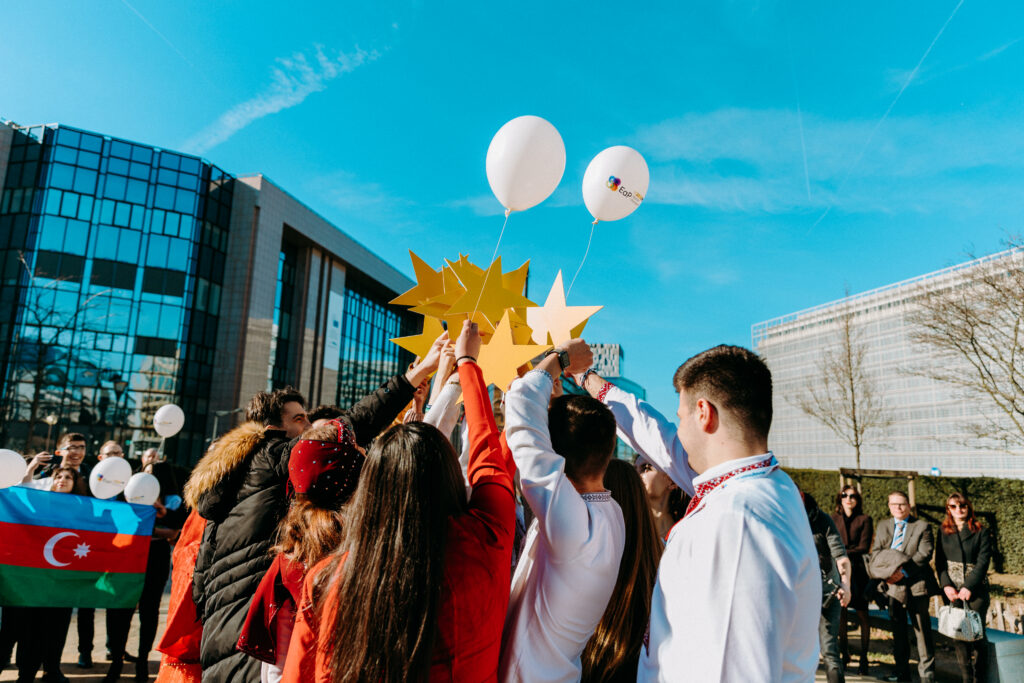 In 2019, Eastern Partnership initiative celebrates 10th anniversary
In 2019, Eastern Partnership initiative celebrates 10th anniversary
Victoria Molnar, Ukraine
1.I first heard about the EaP when I was at university in 2016. But I’ve come to understand it far better sine I became a Young European Ambassador in 2017.
2.Of course, all the countries participating in the EaP have ambitions to join the EU. But I think this partnership is more about learning and cooperating with each other.
3.Well, first of all it helps to increase the competition among the EaP participants, which can also be a disadvantage. But the major advantages of the EaP are that all the countries have the ability to cooperate and learn from each other. There are a lot of programmes that are implemented within the EaP, and significant funds are available for EaP enterprises.
4.Yes, that’s definitely an issue. But the partnership is designed around the idea of different speeds for different countries. So I don’t think that the whole policy should be scrapped because of this. This isn’t a bad thing. These are just different speeds that the EU and EaP countries in particular have to follow. And how can you cancel the policy when we have such positive results?
5.This is an interesting question. I can’t say that Russia has the potential to influence the whole EU policy. The aim of the EaP was first to get all the participants closer to the EU. But it wasn’t like a membership action plan. For that scenario, the EU has other procedures. Russian influence may have been on bilateral level, in specific countries of the EaP, but not on the whole EU policy or towards the EaP as such.
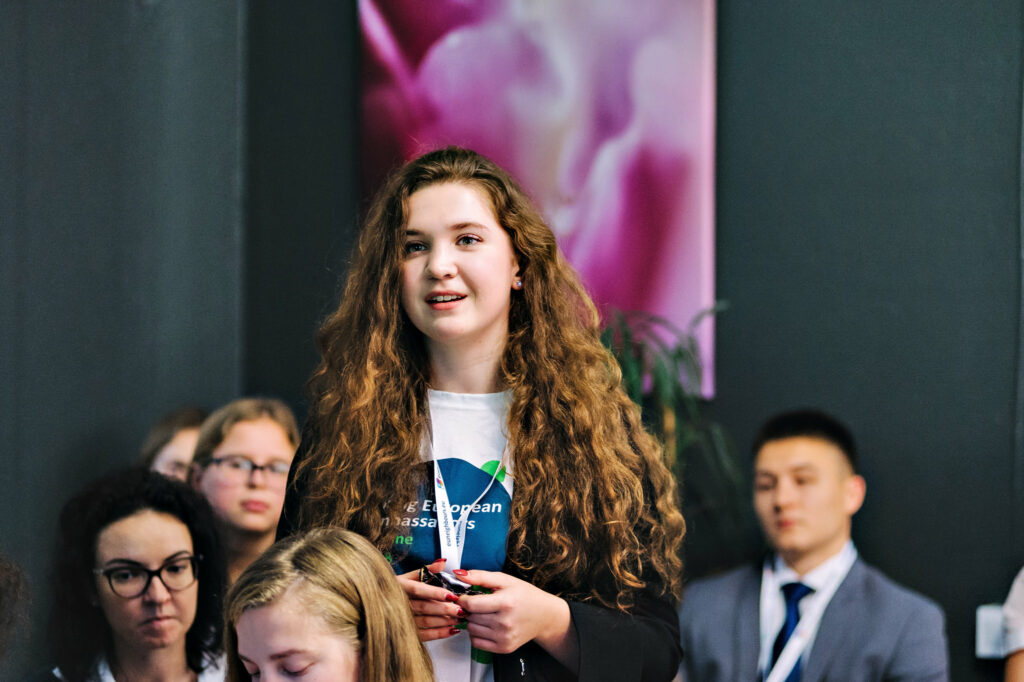 Viktoriia Molnar, Ukraine
Viktoriia Molnar, Ukraine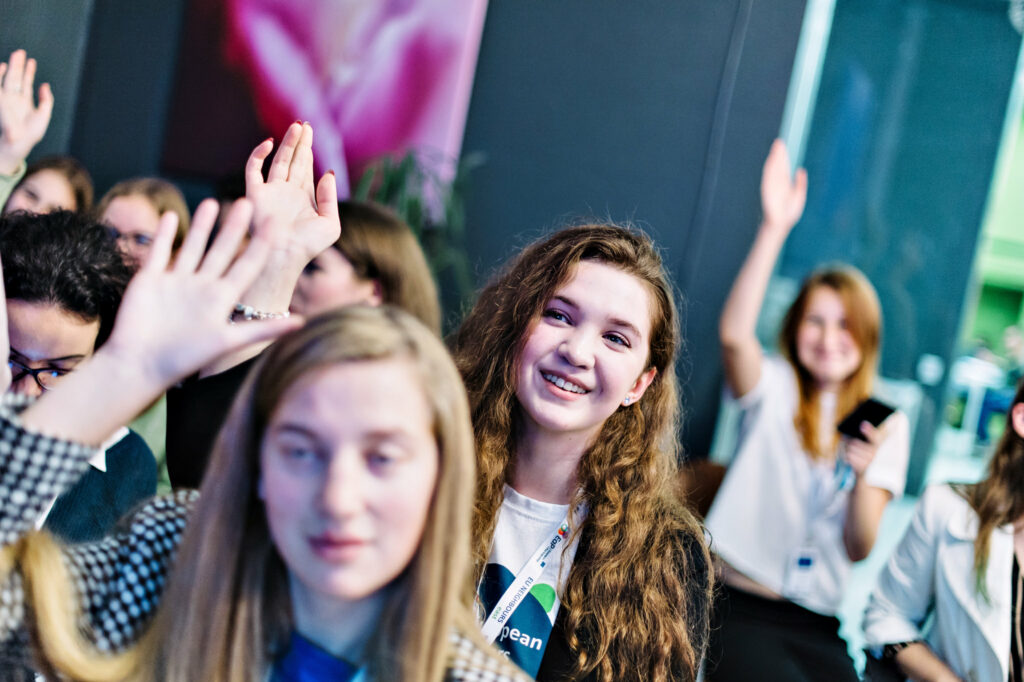 Viktoriia Molnar, Ukraine
Viktoriia Molnar, Ukraine
Tamar Samushia, Georgia:
1.It was in 2015 that I started to learn more about the Association Agreement, a more legal, political approach to the Partnership. Then came Erasmus+ and the Young European Ambassadors programme that gave me a more cultural and broader vision of the partnership.
2.Before we talk about EU membership, we should first analyse all the benefits that we can receive from the Eastern Partnership right now. One excellent example of such benefits is the visa liberalisation that we achieved a few years ago. From my point of view, I feel that today’s status of an associated country is much better for us than the status of membership countries.
3.The greatest plus of the EaP is that there is a huge joint platform where people can bring their ideas and implement them; there is a huge potential and resources concentrated there. I wouldn’t talk about minuses, but there is a challenge for us. We shouldn’t have lost our individuality when we are gathering together under the umbrella of the EaP.
4.I think that an individual approach is still possible within the EaP. After the Association Agreements were signed and came into force with Ukraine, Georgia and Moldova, we now have to implement them. This is the biggest challenge; once implementation gathers pace, we can gather together to see where we are.
5.From my point of view, of course there is Russian influence on the Eastern Partnership. And it is called the Kremlin’s soft power, which is much talked about in Georgia, Ukraine, as well as in other EaP countries. But this problem should be recast as a challenge to overcome together within the EaP. Because only together within the EaP, will it be easier to overcome the Kremlin’s soft power challenge.
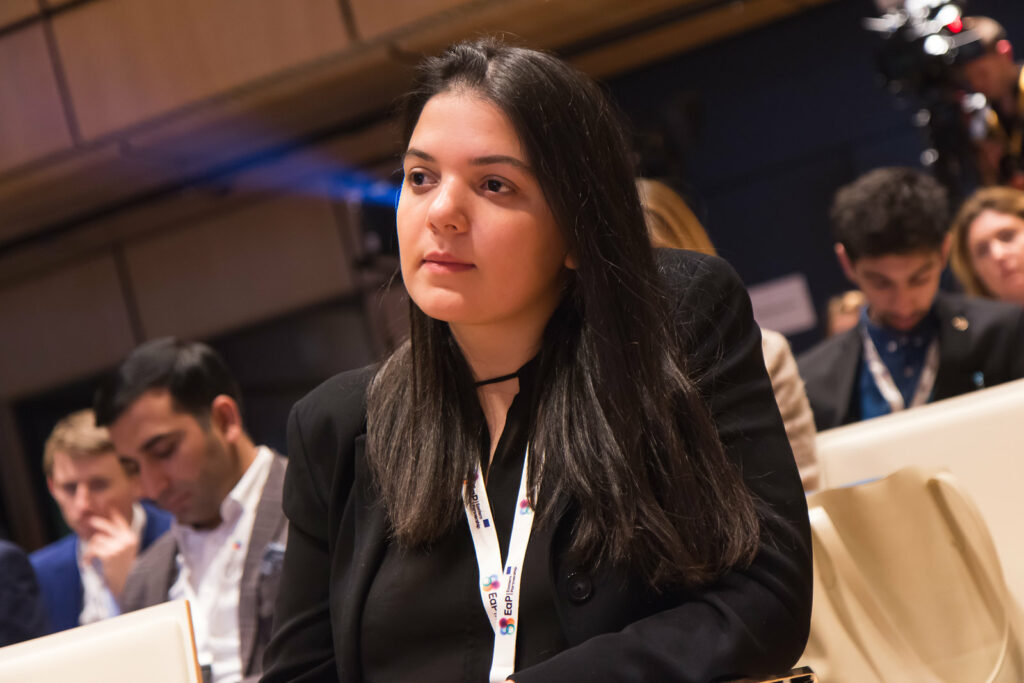 Tamar Samushia, Georgia
Tamar Samushia, Georgia
Volha Shman, Belarus
1.The first time I heard about the Eastern Partnership was during an Erasmus+ training course. There were young participants from both the EU and EaP countries, and the organisers were trying to bring them together. And I think this is the main advantage of the EaP initiative.
2.Well there were a lot of discussions and debates around the question what is the EaP about? Is it about membership or something else? The agenda in a country like Belarus is a bit different from EU integration and officials are quite clear, like the Deputy Minister of Foreign Affairs who recently said it has never been our aim to become a member of the EU, but still we can cooperate… For me, the EaP is about cooperation first of all. And nobody ever said that membership is actually the final aim of this policy initiative. For now, we can try to find some interesting points of cooperation, for instance on the economy, civil society dialogue, or security. I believe the EaP is about cooperation from both sides.
3.My colleagues have already mentioned a lot of pluses, but there is still much to do. One of the important issues is inclusion, because sometimes our efforts don’t reach the regions and stay at the level of the capitals. I think this needs to be addressed and the programmes have to be extended to reach as many as possible people in the regions.
4.Yes, I think the Partnership needs to be reviewed and there should be some reflection on the results that have already been achieved. We need to review some areas and think about new instruments, because if something works in one country, it doesn’t mean it will also work in another. Despite all the similarities, we have many differences: economically and politically we are parts of different political and security blocks.
5.Russian influence on the EaP is more institutional I would say. Because for instance we are a member of the security block with Russia. I don’t think there will be direct military Russian intervention, because we are members of a single state with Russia. But there is a lot of public dialogue in Belarus about it because of the recent events in Ukraine, and people have started to think what would happen if things escalate. But for now it’s all about balancing between the two blocks.
 Volha Shman, Belarus
Volha Shman, Belarus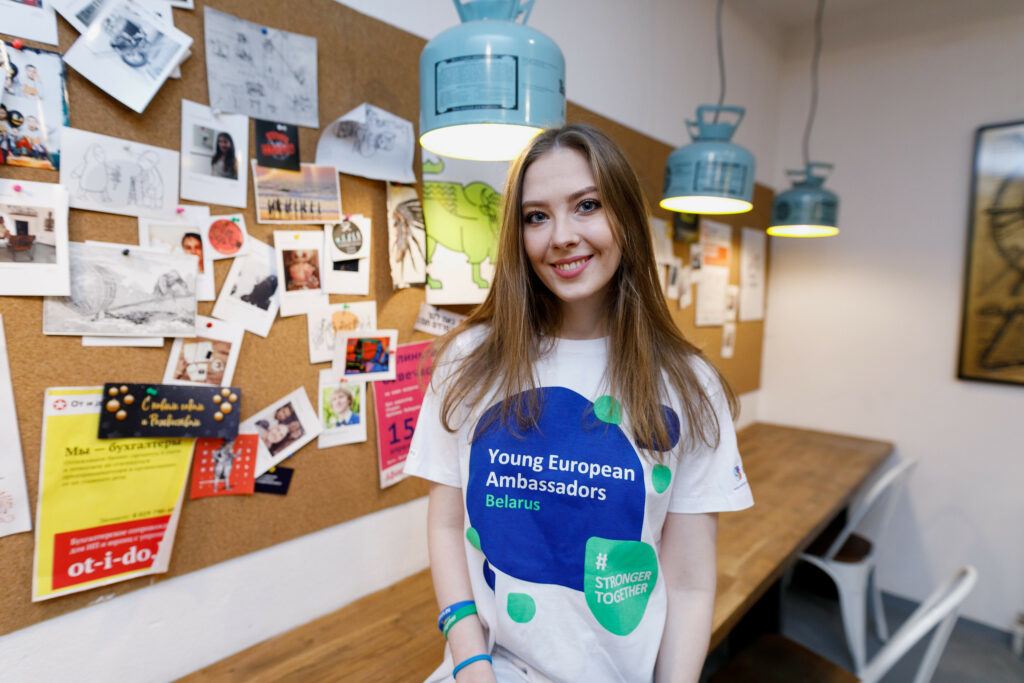 Volha Shman, Belarus
Volha Shman, Belarus
Harutyun Tsatryan, Armenia:
1.I first heard about the Eastern Partnership when I was a journalism student at university. It was ten years ago, when the initiative was only just beginning, and Poland was pushing to somehow bring all the six countries closer. Now, as you know, Armenia has agreed a Comprehensive and Enhanced Partnership Agreement (CEPA) with the EU, that was signed on 24 November in the margins of the Eastern Partnership Summit in Brussels.
2.EU membership is not the core aim of EaP policy. Its vision of cooperation through the Eastern Partnership is not about new members.
3.Among the positive changes in the six EaP countries, we see a stronger economy, and a more competitive educational system. Among the minuses, I would highlight the failure to fully implement all the opportunities that we have within the EaP. Many good ideas remain on the table or fail to go beyond the capitals. I mean that the implementation process is often lame. The problem is also on the institutional level because we have to take into account a governmental system from the Soviet period, where the state tries to control everything.
4.The EU’s Neighbourhood policy does not provide any feedback or signals that after all you might become an EU member. So perhaps that in the years ahead membership is something that will be discussed with the three already associated countries. In Armenia, we are just going to implement the CEPA.
5.Frankly speaking, Armenia is in a very tricky position. Of all the six countries, Armenia is the only one which has a Russian military base on its territory. So we need to figure this out, because the Russian military base is located in the second biggest Armenian city close to the border with Turkey. Also we have two conflicts. One in the north with Azerbaijan, and then the situation with Turkey. On the one hand, Armenia cooperates with the EU, whose market is becoming more influential. On the other, we see Russian and Eurasian interests. So as our Belarusian colleague said, Armenia too is trying to balance between powers.
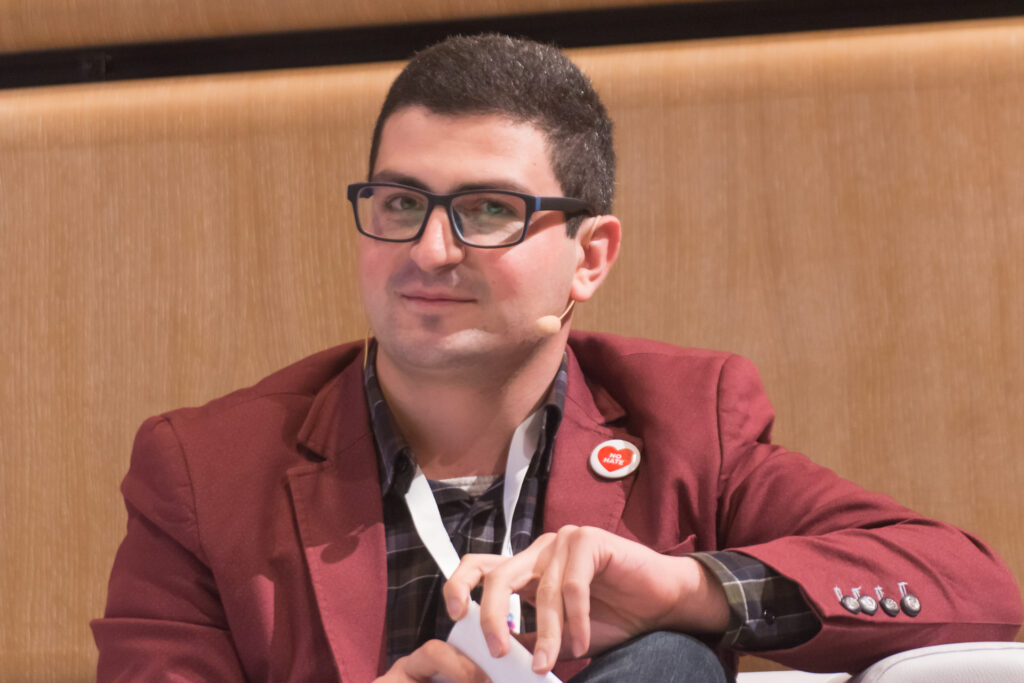 Harutyun Tsatryan, Armenia
Harutyun Tsatryan, Armenia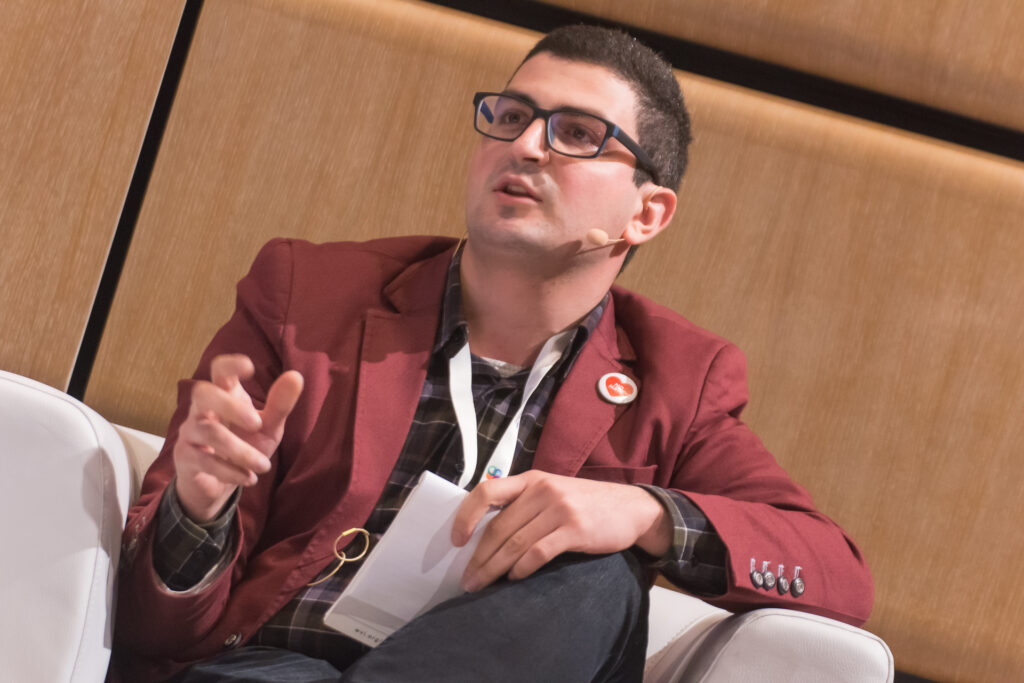 Harutyun Tsatryan, Armenia
Harutyun Tsatryan, Armenia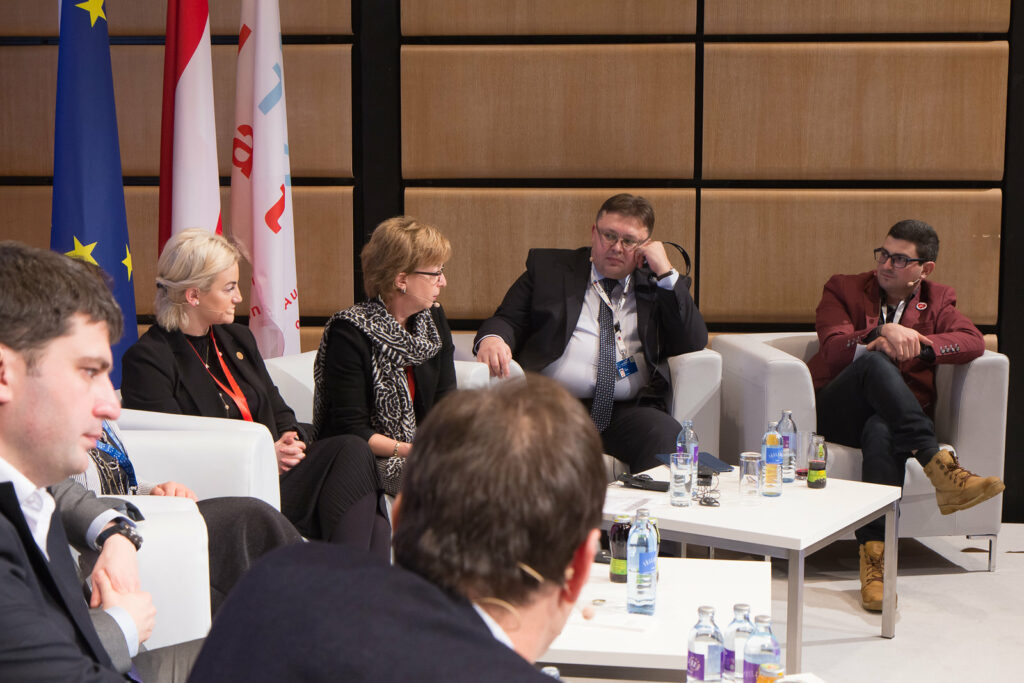 Harutyun Tsatryan at discussion panel
Harutyun Tsatryan at discussion panel
Carolina Sclifos, Moldova
1.Probably it was in 2011-2012 when I graduated from European Studies. I did a lot of work and wrote papers about the EaP, and realised that this is a special policy for the whole region.
2.For me, cooperation and development are the main goals of the Eastern Partnership. The membership perspective is a separate issue. But don’t forget that ten years ago Russia was also invited to participate in the EaP.
3.On the one hand, I can say that civil society in Moldova is very active. Meanwhile because of the political situation in the country we have a negative perspective looking at the problems of justice and corruption. On the other hand, the EaP policy is also facing some challenges. So it can be the basis for adjustments to the initiative. And it is very important to clarify that these adjustments are different for all six EaP countries, and we therefore have to take this into account.
4.Until now, the EU has made it clear that this policy is not connected with EU enlargement. But now as we celebrate the 10th anniversary of the EaP, we can renew the policy according to political motivation of each member country. And this may include the aspiration of some countries for EU membership. In the case of Moldova, the EaP has been a story of success. We have a visa free regime and DCFTA, European financial support and investment.
5.Putting aside our emotions, every Eastern Partner country is independent and free to choose its own course and policy. This is the main point. My colleagues have already mentioned soft diplomacy. And here Russia didn’t succeed. But we also have to take into account Russian propaganda Another issue is the military conflicts that we have in almost every EaP country. But many of these conflicts began in the Soviet period and are not connected with the EaP. I think this question needs more involvement from the EU to provide some solutions. But it also needs political willingness from EaP countries to solve these conflicts.
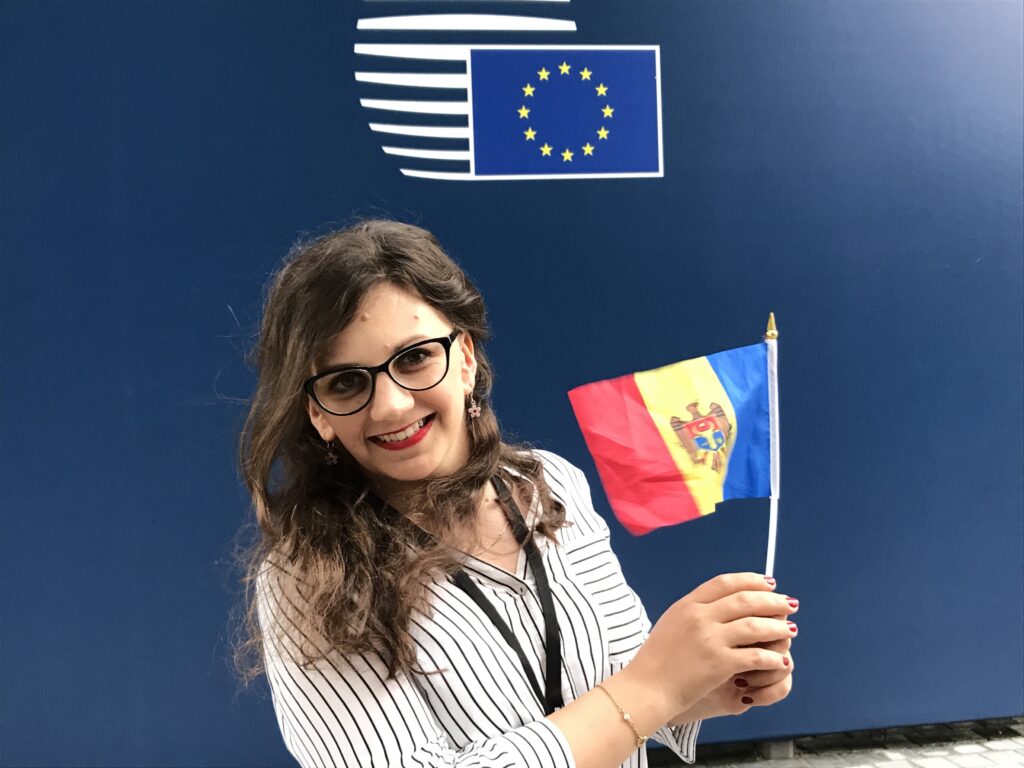 Carolina Sclifos, Moldova
Carolina Sclifos, Moldova
Shujaat Ahmadzada, Azerbaijan
1.I first heard about this policy when the then President of the European Commission Jose Manuel Barroso visited Azerbaijan in 2013. We are interested to come closer to the EU because our main trade partner is not Russia: it is the EU. Our main products that we sell are gas and oil. And the main buyers are in the EU – Italy, Greece and others. So we are playing a crucial role in EU energy diversification policy.
2.The core goal of this policy is partnership, as we can see from the name of the Eastern Partnership. So above all we are neighbours, cooperating with the EU in a social, economic and political way. But membership is not part of the process, and we should separate it from the EaP, because for a membership perspective the EU has the Copenhagen criteria, which are different from the EaP criteria.
3.Among the pluses is the fact that the EaP is a unique platform that brings a lot of people from the post-Soviet countries together to share common values and ideas, and to give opportunities to develop. But there are some challenges and obstacles, including conflicts in the region, domestic policy issues, institutional problems, etc.
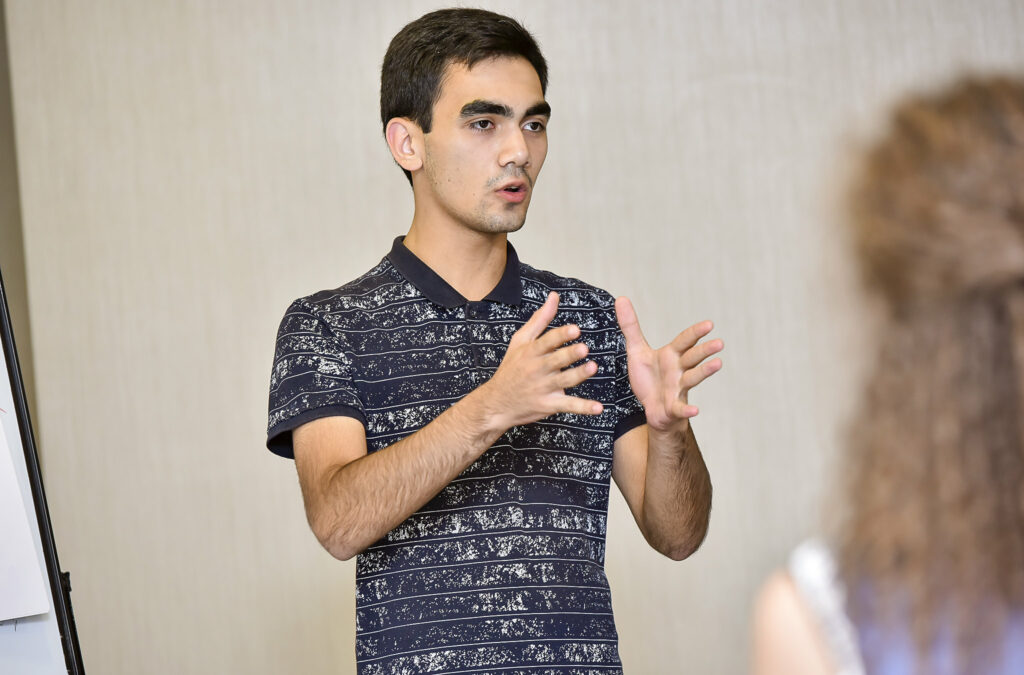 Shujaat Ahmadzada, Azerbaijan
Shujaat Ahmadzada, Azerbaijan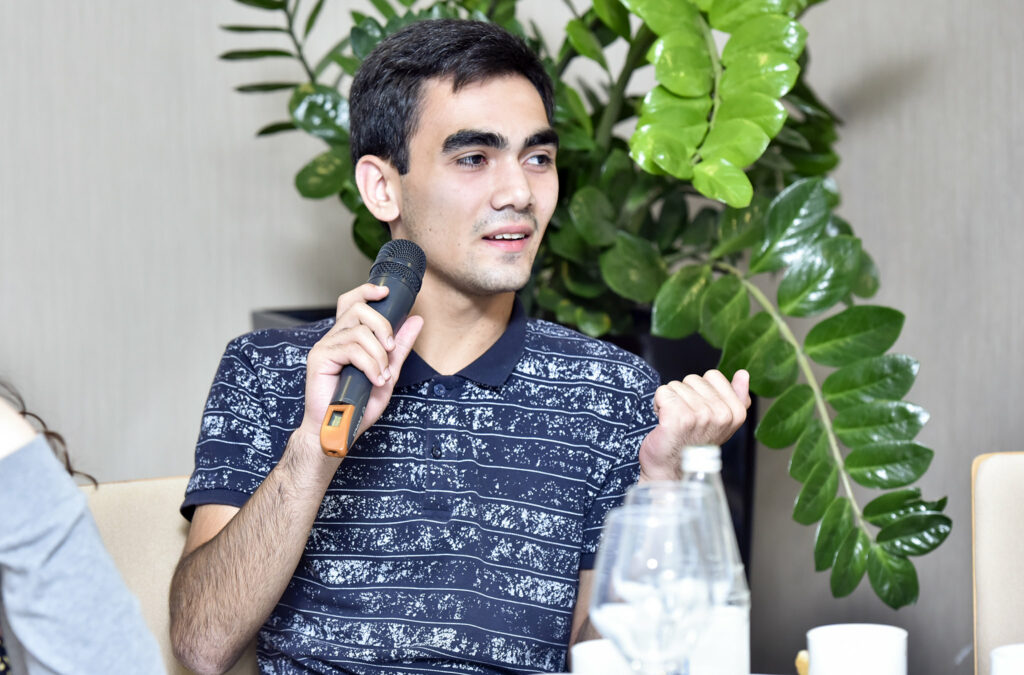 Shujaat Ahmadzada, Azerbaijan
Shujaat Ahmadzada, Azerbaijan
4.We can all see that three EaP countries are moving in one direction and the other three in another. But I believe that every country is free to choose its own way of development and future. We already have three countries that have signed a DCFTA and another three have very good relations with Russia as a neighbour. But it doesn’t mean that they are moving in the wrong direction. They are simply balancing. And in all cases I believe this policy has to be enhanced because it will give more opportunities for young people and ordinary citizens of these countries. And if already associated countries want to join the EU, they can open a new negotiation track.
5.I want to start from the military conflicts in EaP countries that you and my colleagues have already mentioned. They were not caused by the creation of the Eastern Partnership: the real reason is that EaP countries wanted and gained independence from 1991-1992. And these conflicts are ongoing in Crimea, Abkhazia, Nagorno Karabakh, Ossetia and Transnistria. All of them have the same fundamental reasons, serving as obstacles to block the independence of these six countries. Of course, there is Russian influence on some levels. But we can resist it.
Article published in Russian by Segodnya.ua
MOST READ
SEE ALSO

‘The Kremlin has entered the chat’: how to protect your personal data on Telegram and avoid the bait of propaganda
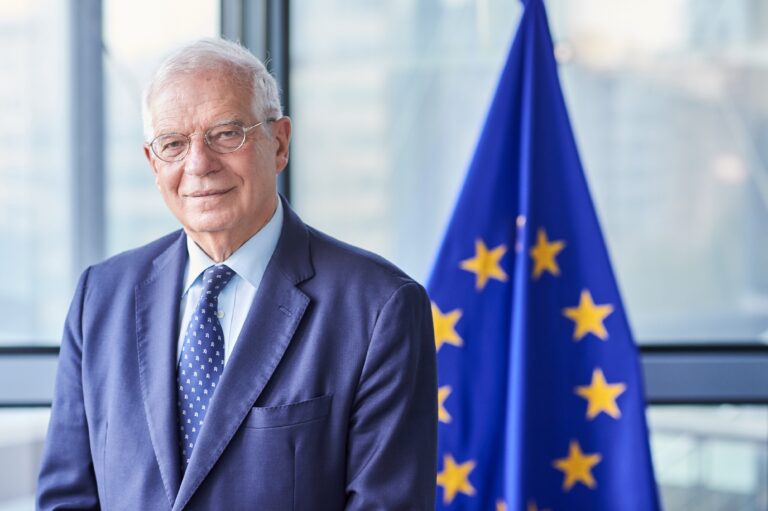
No, time is not on Russia‘s side

Socks for Peace: how the Vilni project is supporting internally displaced women in Ukraine
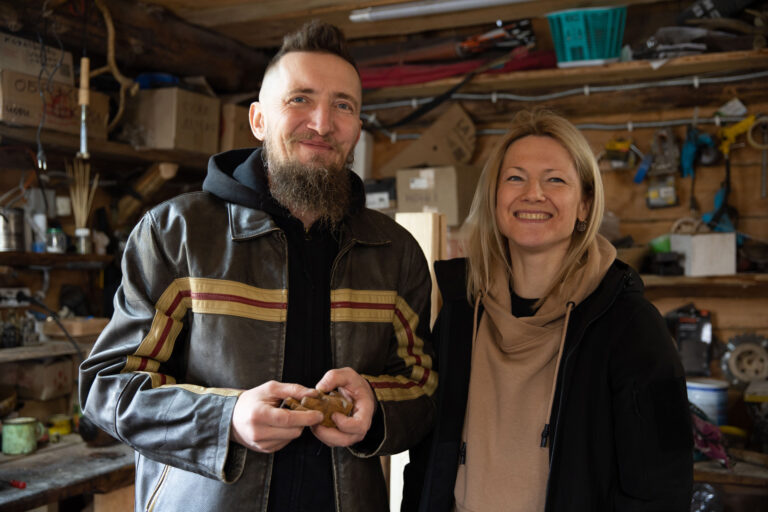
Celebrating traditional Ukrainian cultural identity in Rivne
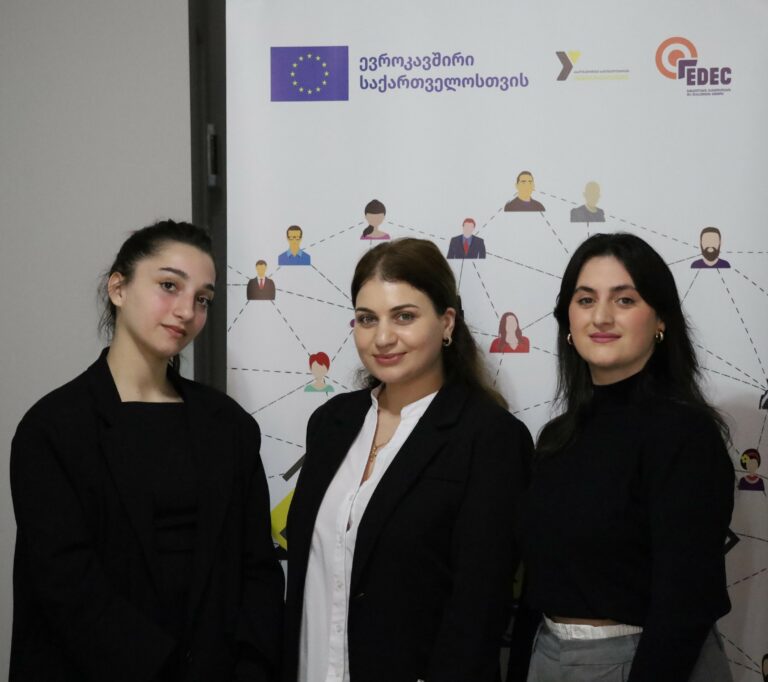
A hands-on approach to boost youth employment in Georgia
More campaign pages:
Interested in the latest news and opportunities?
This website is managed by the EU-funded Regional Communication Programme for the Eastern Neighbourhood ('EU NEIGHBOURS east’), which complements and supports the communication of the Delegations of the European Union in the Eastern partner countries, and works under the guidance of the European Commission’s Directorate-General for Neighbourhood Policy and Enlargement Negotiations, and the European External Action Service. EU NEIGHBOURS east is implemented by a GOPA PACE-led consortium. It is part of the larger Neighbourhood Communication Programme (2020-2024) for the EU's Eastern and Southern Neighbourhood, which also includes 'EU NEIGHBOURS south’ project that runs the EU Neighbours portal.

The information on this site is subject to a Disclaimer and Protection of personal data. © European Union,







